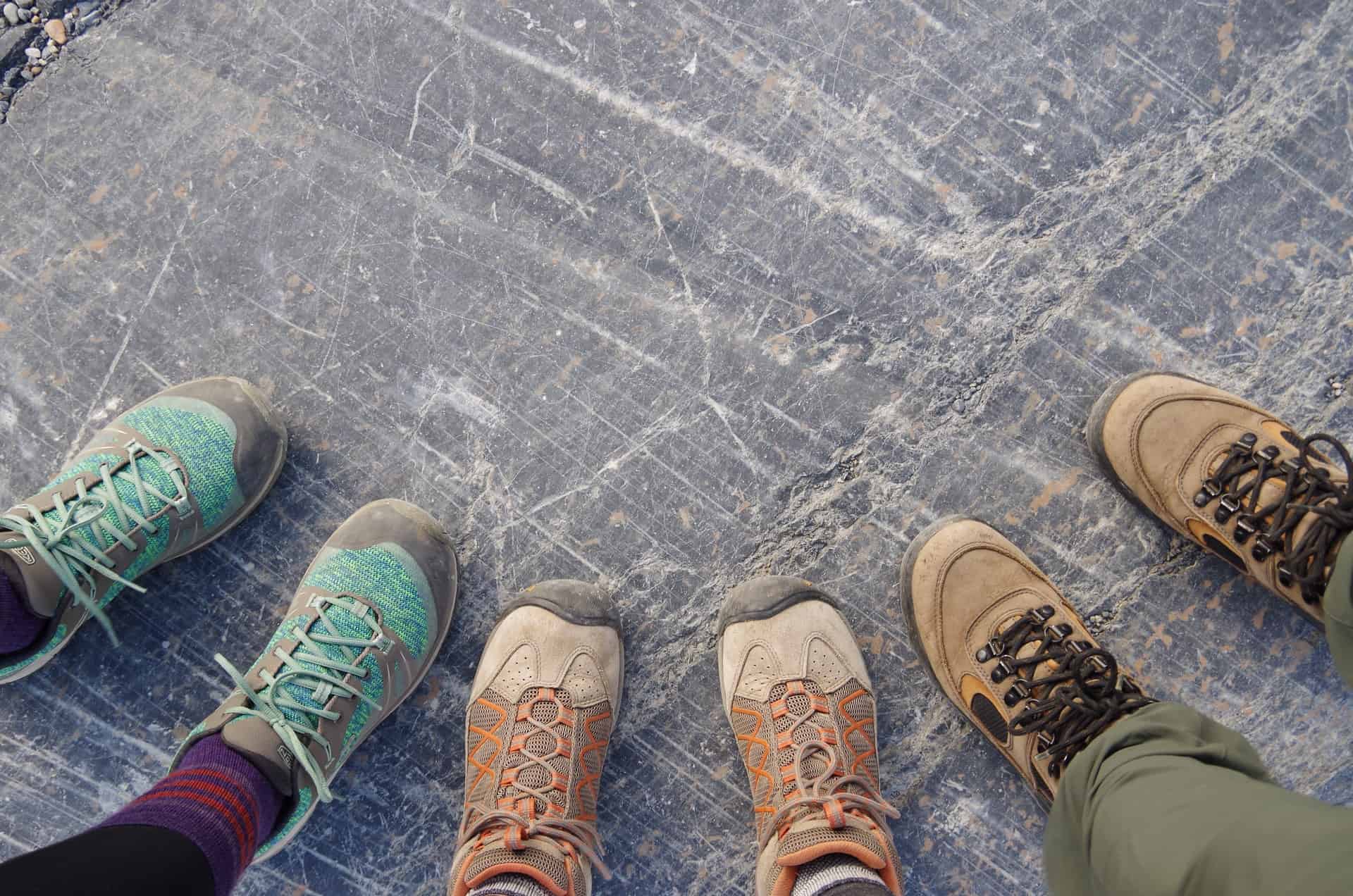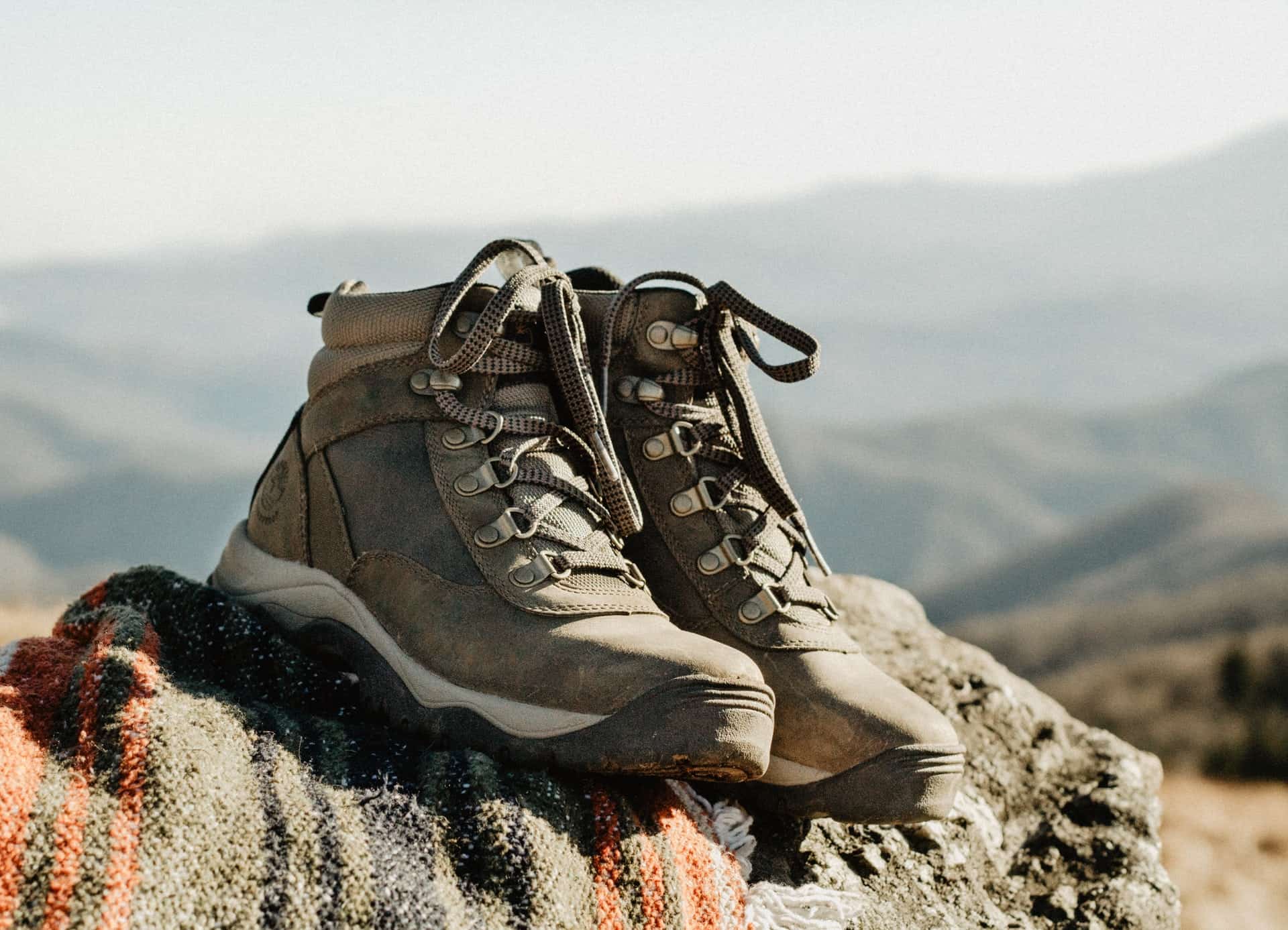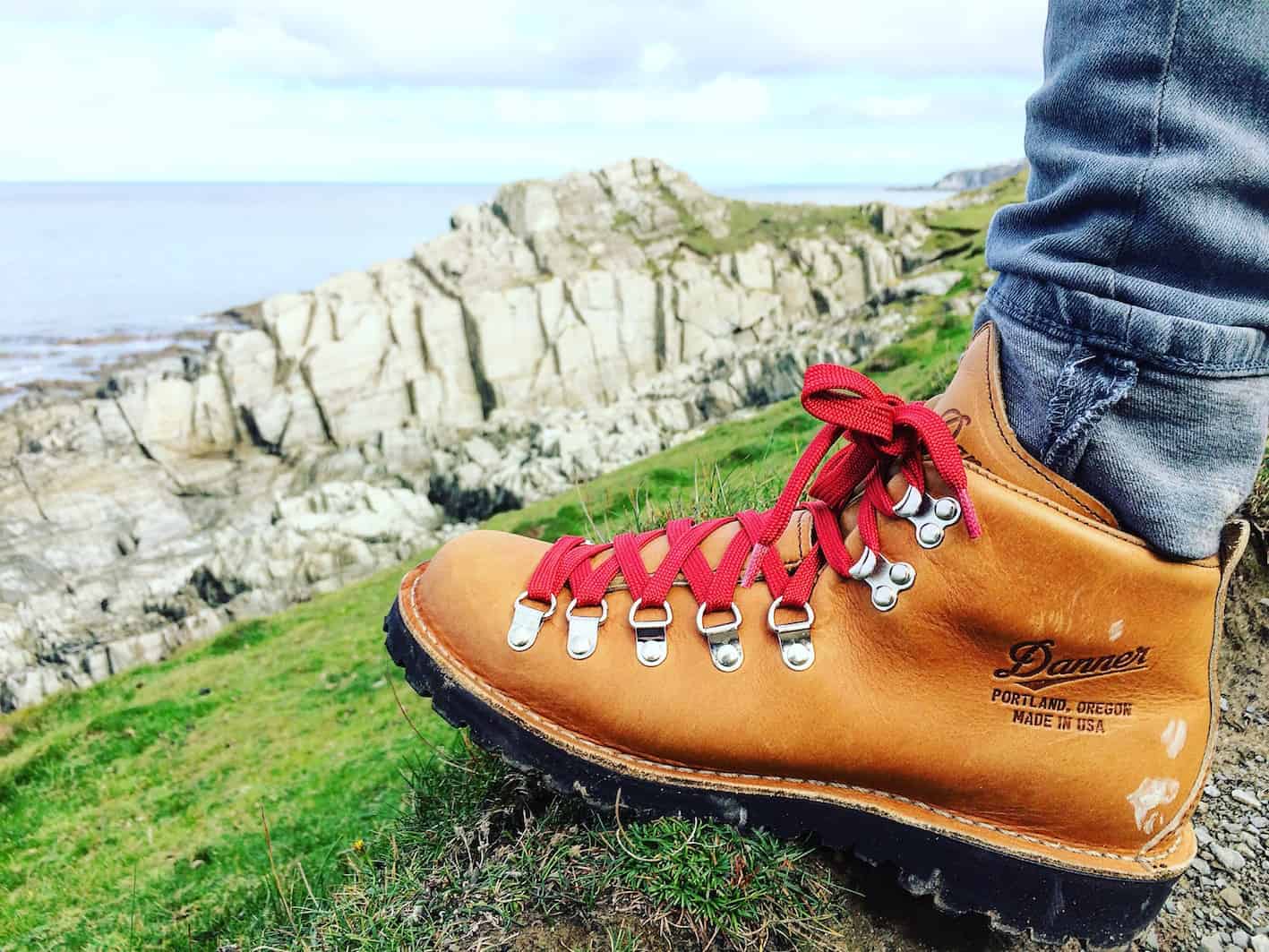With so many options in the market, and massive gaps in prices, style, and purpose, understanding how long your hiking boots should last can be a confusing question.
Backpacking and day-hiking boots, trail runners, and more, the options can seem endless and make it feel impossible to figure out.
Between the different materials, variances in how much and what kind of hiking you do, and brand reputations you may be left scratching your head when trying to figure how long your boots will last.
If you want to know a good estimate on your boots’ lifetime and the best ways to figure that out, you’ve come to the right place!
A good rule of thumb is that most hiking boots will last from 400-1000 miles. This will vary depending on how much you hike, what type of boots, your maintenance of them, and their construction quality, but it is a good rule of thumb.
Do your best to consider how much hiking you do, and how much of it is on rough terrain, and so on. You’re in a great place to learn how to estimate the life of hiking boots, and how to keep them alive for a long time!
For the most part, I will be discussing hiking boots as opposed to trail runners. Hiking boots are generally defined as a more ruggedly constructed piece of footwear that goes farther up your ankle, as compared to trail runners, which are basically a beefy pair of tennis shoes for hiking and running.
Hiking boots come in a vast variety of construction styles, materials, and designs, but the same overall rules and ideas will apply to nearly every boot out there!
So, how long Do hiking boots last?
Generally, your hiking boots should last between 400-1000 miles, but depending on the boot it could be more, it could be less. A good place to start in estimating how long your boots will be going strong is to research if they are constructed to be more lightweight, or more heavy-duty. A lighter boot may be your preference on the trial due to the reduced weight, but you could be paying the price in their lifespan.

Some examples of things to consider when estimating how long your boots will last are as following:
- How often do you hike or use your boots?
- How far are your trips?
- Do you hike or backpack with a heavy load?
- What material are they?
- Do you perform regular maintenance?
- Do you wear your hiking boots day-to-day or off the trail?
- Are your boots recraftable?
- Do you have a good quality pair of boots?
Will more expensive boots last longer?
While it’s counter-intuitive, more expensive boots don’t necessarily last longer. A more expensive boot may be better quality, but you should always research the boots you plan to purchase to see how well they actually perform.
A larger price tag can possibly mean they are better boots, but you could easily find a pair designed to be fashionable instead of practical, and mistake the cost for quality.
Look for information on the boots you are considering, the reputation of manufacturers and their products are easily found online.
I recommend checking several hiking gear websites, forums, or YouTube so you can listen to people who hike discuss if the boot are well made. It’s also a good idea to talk to friends or people in your area to see what boots they like for your environment.
A lot of boots are versatile, but you’d probably be more comfortable in a boot fitting to your climate and conditions. A desert boot may not be great in alpine conditions, and vice versa!
How can I make my boots last longer?
Through proper maintenance and care, you can make sure your boots last significantly longer than you may expect.
If you take the care to dry your boots when waterlogged or clean them off after getting especially muddy or beat up, you can avoid extra damage.
For example, I have a pair of leather hiking boots. I regularly use a product to condition and maintain the leather, my choice is Danner Boot Dressing.
By doing this once every month or so, or after hard use, they stay in much better shape.

While a little mud or water won’t hurt your boots, you must clean them regularly. Materials left on your boots can cause extra corrosion and wear. For instance, if you wear your hiking boots out on snowy roads or sidewalks, you may get brine on your boots.
This could cause corrosion and reduce their lifespan if you do not clean them! If your boots get wet, keep them somewhere dry and maybe stuff newspapers inside to dry them.
Some companies sell boot dryers if you feel like that is a good investment for your needs. When cleaning your boots a piece of cloth works fine, but buying a brush can make it easier to remove debris.
Another easy way to keep your boots feeling fresh is to change the insole whenever they are well worn. If you start to notice discomfort, a new insole is a quick and easy way to make your boots feel comfortable.
If you have a damaged insole you could eventually begin to damage the inside of your boots, so check them regularly. Insoles are also a great way to slightly alter fit, or make your boots a bit more comfortable to walk in.
What are recraftable boots?
Some boots, especially higher-end models, may be recraftable or resoleable. Resoling means that the sole of your boot can be switched out to a new one after they are used beyond what is comfortable or practical.
Recraftable boots mean that after your boots are well worn and beaten into submission, you can send them to the manufacturer or take them to a cobbler to be refreshed.
When recrafted, your boots will likely be restitched so the seams are strong again, resoled so traction and comfort are restored, and if a leather boot, the leather will be conditioned to bring some life back into them.
If you are unsure if your boots can be recrafted, Check the manufacturer’s website, they will most likely have information to let you know.
A great example of recrafting can be found with the American company Danner. If you buy a Danner boot model that is recraftable after your boots are heavily used you can pay a fee and send them to Danner.
They will refresh your boot so that they feel almost new. Many people love recraftable boots since you’ll receive your worn-in boots, complete with all of their memories of your adventures, as good or better than they were when you first bought them.
I personally have a pair of recraftable Danner hiking boots that I found to be an amazing investment.
Between their comfort and potential for recrafting, I’ve been a happy camper even in some poor conditions.
A recraftable or resoleable boot may come with a more expensive price tag, but the benefit far outweighs the cost for many hikers.
How can I tell if boots are built to last?
With so many options available, it can be hard to know if boots will hold up to rugged conditions. Many companies will market themselves by centering on their toughness, or burly features that offer durability.
Experts recommend you look for tougher materials that are often found in quality hiking boots. A great example is polyurethane vs Eva foam.
Eva foam may be found in cheaper options, and will not stand the test of time compared to polyurethane. Polyurethane is often found in cushioning and insulation in hiking boots, and it’s well known as a lightweight and tough material.
Phrases like “abrasion resistant” or “TPU welding” may also indicate toughness. Other terms to look out for include “Goodyear welt”, “Vibram soles”, and “stitch down construction”.
Since boots can vary a lot between companies, materials, and construction, research how a pair is constructed and how long the style you want will stay strong.
when to replace hiking boots?

If you’re on the fence about buying a new pair of boots, there are a few things you can look for to decide. I’ll go into more detail soon,
but a shortlist of qualities to look out for are as following:
- Foot pain after hikes
- Ankle, knee or back pain, more frequent blisters, etc.
- Seams beginning to unravel or break
- Loose eyelets
- A flat or overly worn sole (Unless resoleable/recraftable)
- Waterproofing is failing
- Cracks in the sole or midsole
- Ankle losing support
A visual inspection is normally enough to figure out how your boots are doing, but be thorough enough to make sure there aren’t any subtle signs they are beginning to heavily wear.
A trial you can perform to get a better idea of how your boots fare is the bend test. Take your boot, one hand on the toe area and one on the heel, and bend the boot inward.
It should be more difficult to bend them the closer your hands get. If your boot bends too easily, it may be a sign that they’re losing stiffness and you might need a new pair.
Again, keep in mind you may be able to recraft or resole your boots to fix this problem. If you purchased a lighter boot they may be constructed more flexibly, and this test is not ideal for trail runners.
What brands are known for being especially durable?
Nobody can tell you what brand or style of boot is right for you. Only you know what kind of hikes you are doing, what fits your foot, and how nice of a boot you need. Chances are if you enjoy hiking you probably know a few companies to look into, but I’m listing a few just in case you’re not familiar with any.
While I can tell you some brands that have a good reputation, trust your judgment, try on several pairs, and pick the boot that fits you, your needs, and your foot best!
A few good brands to look into:
- Merrell
- Asolo
- Danner
- Zamberlan
- Salomon
- Scarpa
- La Sportiva
- Vasque
Is there an option for more casual hikers?
For those who don’t hike very hardcore, aren’t too concerned with ankle protection, or avoid backpacking, you may feel like hiking boots are excessive. If you don’t feel comfortable investing in a pair of hiking boots, trail runners may be an option worth looking into.
If you are a casual hiker who doesn’t necessarily need a durable hiking boot that will last a significant amount of time, they are a great option. Trail runners are essentially a more durable tennis shoe/sneaker made for hikers. If the idea of a larger hiking boot and the extra weight is intimidating, or you aren’t someone who spends a lot of time hiking, they’re a great option to look into!

Conclusion
The rule to keep in mind when considering how long your boots last is nearly always 400-1000 miles.
Researching, trying on several styles, and choosing a boot that fits your adventures will make sure your hiking boots will keep you trekking for a long time to come!
While it can be difficult to estimate how long your boots will hold together, with a little time researching and regular maintenance you’ll have no problem feeling comfortable with your investment.
I hope your boots carry you far and keep your feet feeling amazing, happy trails!
For more guides read my other posts:

